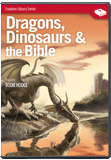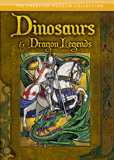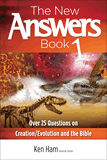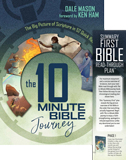Redrawing the Dinosaur Family Tree
The evolutionary “family tree” that ties all dinosaurs together was recently redrawn. What bigger questions does this raise?
Some things everyone knows. Everyone knows Tyrannosaurus rex was a carnivore. Everyone knows Triceratops was a plant eater. And, until recently, everyone knew dinosaurs fall into two broad groups (“lizard-hipped” and “bird-hipped”). Or do they? If several paleontologists in the UK are correct, this “obvious” truth, accepted for over 100 years, may now be in limbo.
Teaching the first-ever creationist dinosaur class at my college, even I assumed this was true. I didn’t imagine questioning it. But what once was firmly established may now be turned upside down.
It’s All in the Hips (Or at Least It Used to Be . . .)
In his book The Science of Hitting, baseball great Ted Williams assures us that the power of the swing resides in the hips. Golfers—and even runners—repeat the same expression.
What is true for golfers is—or was?—true for dinosaurs, albeit in a different way. The two great groups of dinosaurs were always divided by their style of hip. T. rex and long-necked sauropods belonged in the “lizard-hipped” (saurischian) group, while the flashy horned Triceratops and plated Stegosaurus belonged to the “bird-hipped” (ornithischian) group.
This view has been firmly fixed since the work of Harry Govier Seeley in 1887. Seeley grouped dinosaurs based on a technical detail: the direction of a bone in the hip called the pubis. If it was forward-facing, he classified the dinosaur as “lizard-hipped,” and if it pointed to the rear, he classified it as “bird-hipped.” (The pubis points forward on lizards, but rearward on birds.)
The new classification challenges this classic scheme, linking lizard-hipped T. rex and his kin to the bird-hipped group.
Proposed Reclassification
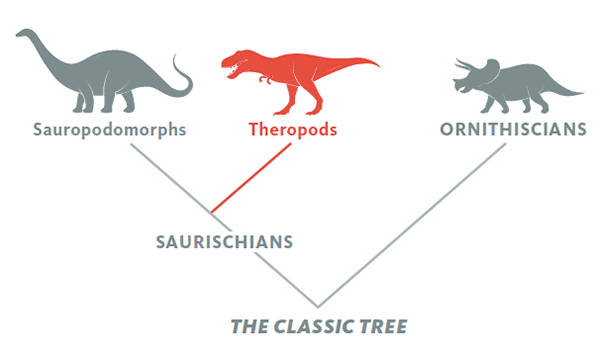
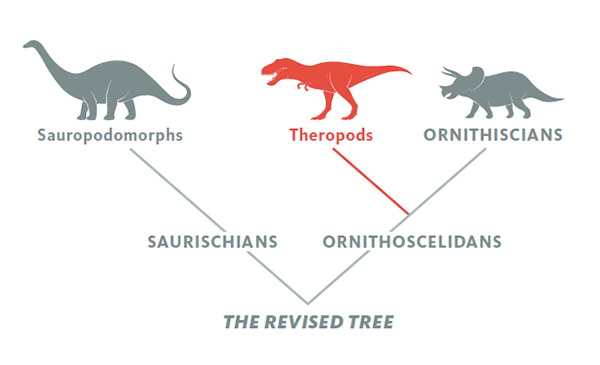
Some scientists propose to radically redraw the two major branches of the dinosaur family tree by placing the theropods with the ornthischians. Such confusion may reflect the challenge that comes from attempting to put together one tree from families that God created separately.
How to Classify Dinosaurs
Without getting lost in the details, let me share the main takeaway. Today the favored scientific way to examine relationships among living things is to assign number values to numerous physical traits and compare them. From these traits, scientists produce a tree called a cladogram. A computer program generates a tree, based on numbers assigned to each dinosaur trait, and lumps organisms with similar traits into larger and larger “groups.” Sounds simple, so what’s the problem?
The problem is that evolutionists force all the results into a single tree (an assumption). But if, as the Bible teaches, God created separate kinds of animals in the beginning, then (creation assumption) we should see many trees.
The revised scheme showed how radically trees can change if scientists add (or remove) different traits. In the new scheme, theropods are now linked to the Stegosaurus group. I and many others were surprised that anyone would make this suggestion.
How did this happen? Comparing a longer list of traits (over 450) rearranged the dinosaur tree in this unexpected way. (This is part of the fun of science!)
In fairness to the scientific methodology, choosing different traits will lead to different cladograms. Indeed, ornithischians are an odd bunch. They include everything from the tank-like Ankylosaurus to the horned Triceratops! Why should these be grouped together in the first place?
The radical change in dinosaur classification, if it becomes the accepted norm, has two interesting implications. First, scientists of all viewpoints—including creationists and evolutionists—believe many things they have not proven. College professors told us dinosaurs were either lizard- or bird-hipped, and we believed it. Second, evolution assumes a common ancestor, but this study shows how easily those ancestors can be “swapped” out. Sauropods and theropods shared a common ancestor yesterday; today, theropods suddenly share a common ancestor with the ornithiscians (Triceratops, etc.).
Let’s look at the creation significance of this. What is it about the biological traits in God’s creation that makes it so easy to construct an evolutionary tree but then, when we add different traits, create a very different tree?
The answer is that God’s biological creation is a mosaic. The Creator filled his creation with many amazing creatures that never had the same ancestors but still share many similar features—in unimaginably complex ways. The duck-billed platypus is an extreme example. It lays eggs like a bird, has hair like a mammal, and has venom like a reptile.
Something about the way God has placed a diverse array of traits in creation defies efforts to create single “trees.” In fact, the same data often generates many mathematically equal—yet contradictory—evolutionary trees. (This dinosaur study, for example, generated 94 mathematically equal trees).
Creation biology has a better alternative: the biological world springs from separately created groups. Genesis 1–2 shows God created many different kinds of creatures (even recognizable to Adam as distinct, Genesis 2:19). T. rex belongs to one tree, Triceratops belongs to another tree, and so on. The many problems evolutionary scientists generate by trying to create only one tree go away when we recognize that nature includes many independent “trees.”
Answers Magazine
September–October 2017
The Creator equipped numerous animals with astonishing tools to find their way as they migrate around the world.
Browse Issue SubscribeRecommended Resources

Answers in Genesis is an apologetics ministry, dedicated to helping Christians defend their faith and proclaim the good news of Jesus Christ.
- Customer Service 800.778.3390
- © 2024 Answers in Genesis




